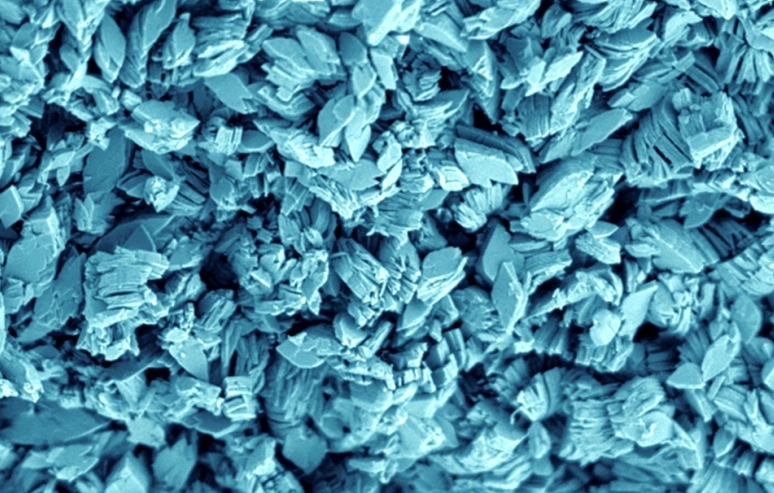
Scientists have discovered eight rare minerals previously undocumented in Nebraska.
Their findings are published in an article in the June edition of the scientific journal Catena.
"These are really exotic by Nebraska standards. The list of minerals of Nebraska has really expanded since we started doing this kind of research," said Matt Joeckel, a UNL geologist.
Scientists began making the discoveries during research for the federally funded STATEMAP program. Joeckel noticed unusual weathering effects in shale outcrops bearing pyrite, or "fool's gold," at sites along the Missouri and Republican rivers. Back in the lab, Joeckel and his colleagues analyzed the structure of the rock crystals using x-ray diffraction and scanning electron microscopy to establish the presence of rare minerals invisible to the naked eye.
One of the minerals discovered was vashegyite, an aluminum phosphate mineral only found in a handful of locations, and almost always in association with chemical reactions involving bat guano in caves. Another discovery, gibbsite, is typically found in the tropics or subtropics. Some other minerals include alunite, aluminite and felsobanyaite.
"What we're seeing is a living laboratory, in which chemical reactions are producing new minerals at Earth's surface," Joeckel said.
He explained that over time, pyrite (iron sulfide) in the rocks, combined with oxygen, water, and microorganisms, leads to acidic conditions and the release of elements such as aluminum, iron, sulfur, and perhaps even arsenic - and the creation of some of these "weird" minerals.
Joeckel describes this process as the natural version of acid mine drainage, an environmental problem frequently associated with coal mines. Although occurring at a smaller scale and not constituting an environmental problem, the process described by Joeckel and his colleagues has broader implications for surface and groundwater chemistry.
"More than anything else this illustrates that it's still possible to make new discoveries," said Joeckel. "We may not have volcanoes or mountains in Nebraska, but there's a lot of stuff going on out there."
Co-authors of the paper are Denise Wally, Nebraska Department of Environmental Quality; Barbara Ang Clement, Department of Biology, Doane College; Paul Hanson, Conservation and Survey Division, School of Natural Resources; Jeremy Dillon, Department of Geography and Earth Science, University of Nebraska at Kearney; and Stephen Wilson, Northern Great Plains Inventory and Monitoring, National Park Service.
- Kat Shiffler, School of Natural Resources